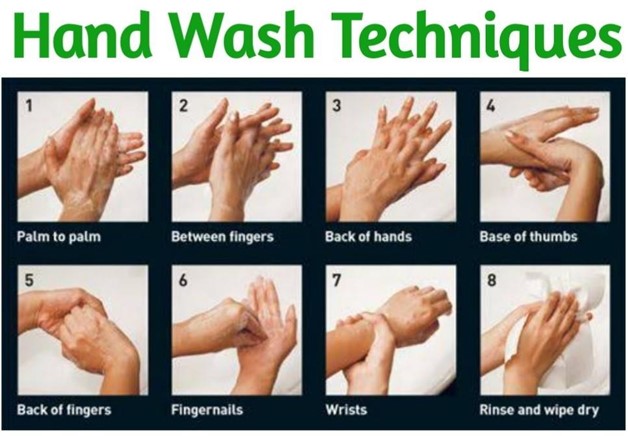A nurse who serves on an infection control committee is assessing the adequacy of environmental controls against infection.
What does the nurse know to be the first line of defense in medical asepsis?
Isolation or barrier procedures.
Standard precautions.
Hand hygiene techniques.
Routine cleaning of client rooms.
The Correct Answer is C
Hand hygiene techniques are the first line of defense in medical asepsis because they prevent the transmission of microorganisms from one person or object to another. Hand hygiene techniques include washing hands with soap and water or using an alcohol-based handrub.

Choice A is wrong because isolation or barrier procedures are not the first line of defense in medical asepsis, but rather a way of preventing the spread of infection to other patients or health care workers when a patient has a known or suspected infection.
Choice b is wrong because the nature of detergent used on the unit is not the first line of defense in medical asepsis, but rather a factor that affects the effectiveness of cleaning and disinfection of surfaces and equipment.
Choice D is wrong because the ventilation system type is not the first line of defense in medical asepsis, but rather a factor that affects the quality of air and the risk of airborne transmission of microorganisms.
Nursing Test Bank
Naxlex Comprehensive Predictor Exams
Related Questions
Correct Answer is A
Explanation
It is a legal record of accountability for the protection of the client and the nurse. This means that documentation provides evidence of the assessments and interventions that have been undertaken by the nurse and can be used to defend the nurse in case of a lawsuit or a complaint. Documentation also supports the provision of safe, high-quality patient care by facilitating continuity of care and communication among health care providers.
Choice B is wrong because it is incomplete and misleading. Documentation supports confidentiality and privacy, but it should never be shared without the client’s consent or a legal authority.
Choice C is wrong because it is too narrow. Documentation provides continuous reference for all care providers to refer to, but it also has other purposes such as quality improvement, research, education and legal protection.
Choice D is wrong because it is inaccurate. Documentation does not provide a framework for clients rights, but rather reflects how the nurse respects and upholds those rights in practice. Documentation also records if clients rights are violated, but this is not the main rationale for documentation.
Correct Answer is D
Explanation
temperature 101.8° F(38.8° C), BP 100/60 mm Hg, pulse 98/min, RR 28/min. This set of vital signs indicates that the client may have an infection or sepsis, which are potential complications of an open cholecystectomy. The client has a fever, tachycardia, tachypnea, and hypotension, which are signs of systemic inflammatory response syndrome (SIRS).
Choice A is wrong because it shows mild hypothermia, hypotension, and tachycardia, which could be due to dehydration or blood loss, but not necessarily infection.
Choice B is wrong because it shows a slight fever, normal blood pressure, and bradycardia, which could be due to pain or medication, but not infection.
Choice C is wrong because it shows a low-grade fever, normal blood pressure and pulse, and mild tachypnea, which could be due to inflammation or dehydration, but not infection.
Whether you are a student looking to ace your exams or a practicing nurse seeking to enhance your expertise , our nursing education contents will empower you with the confidence and competence to make a difference in the lives of patients and become a respected leader in the healthcare field.
Visit Naxlex, invest in your future and unlock endless possibilities with our unparalleled nursing education contents today
Report Wrong Answer on the Current Question
Do you disagree with the answer? If yes, what is your expected answer? Explain.
Kindly be descriptive with the issue you are facing.
